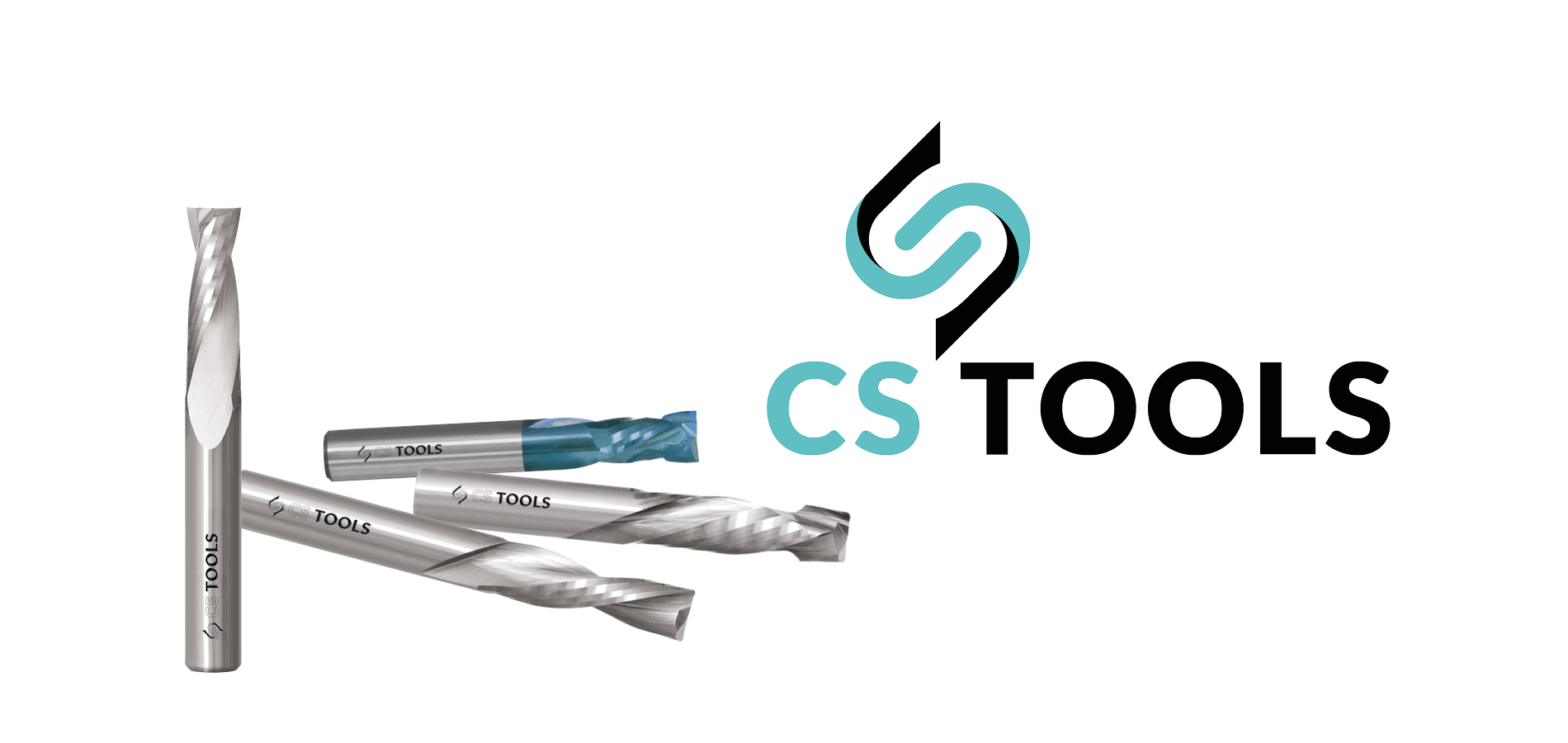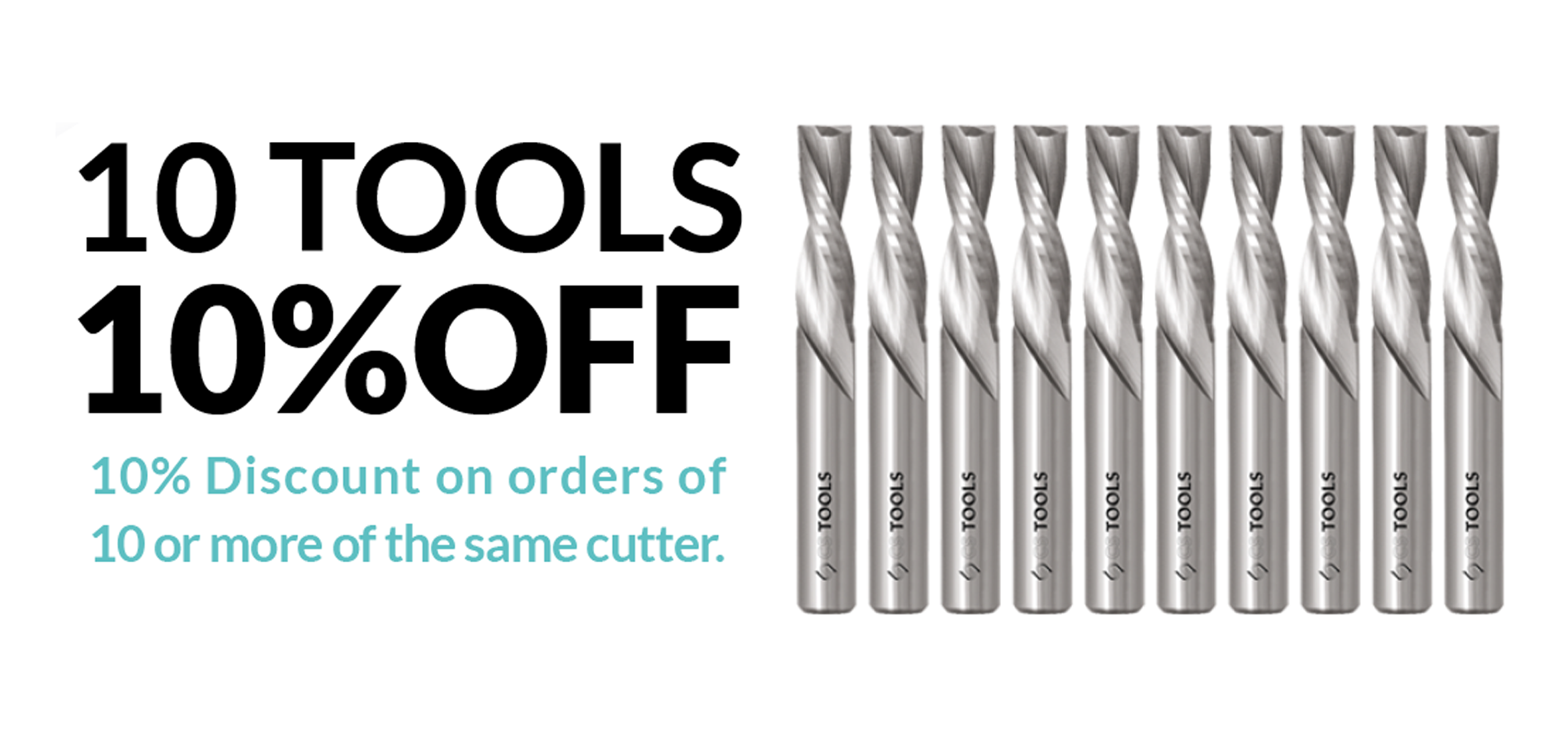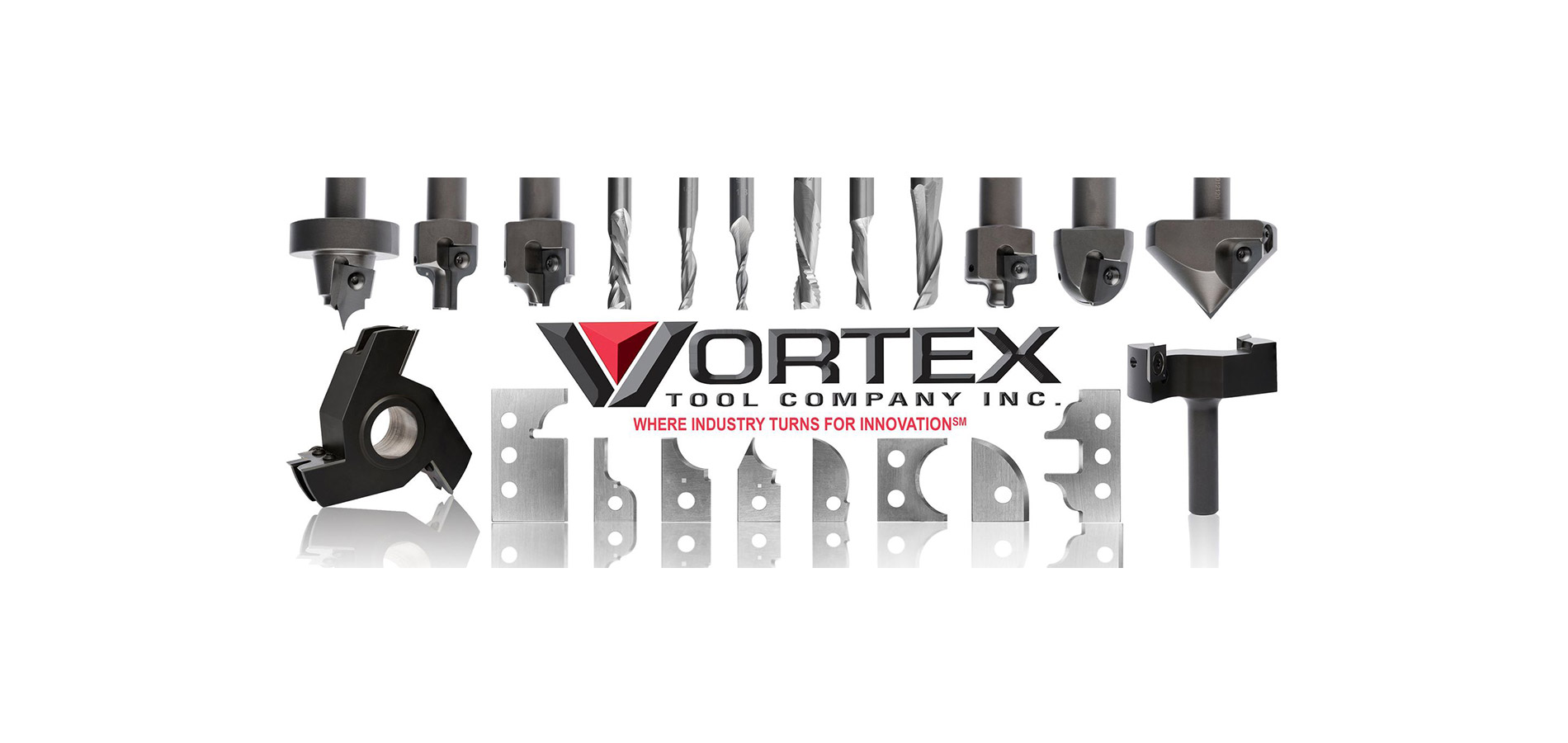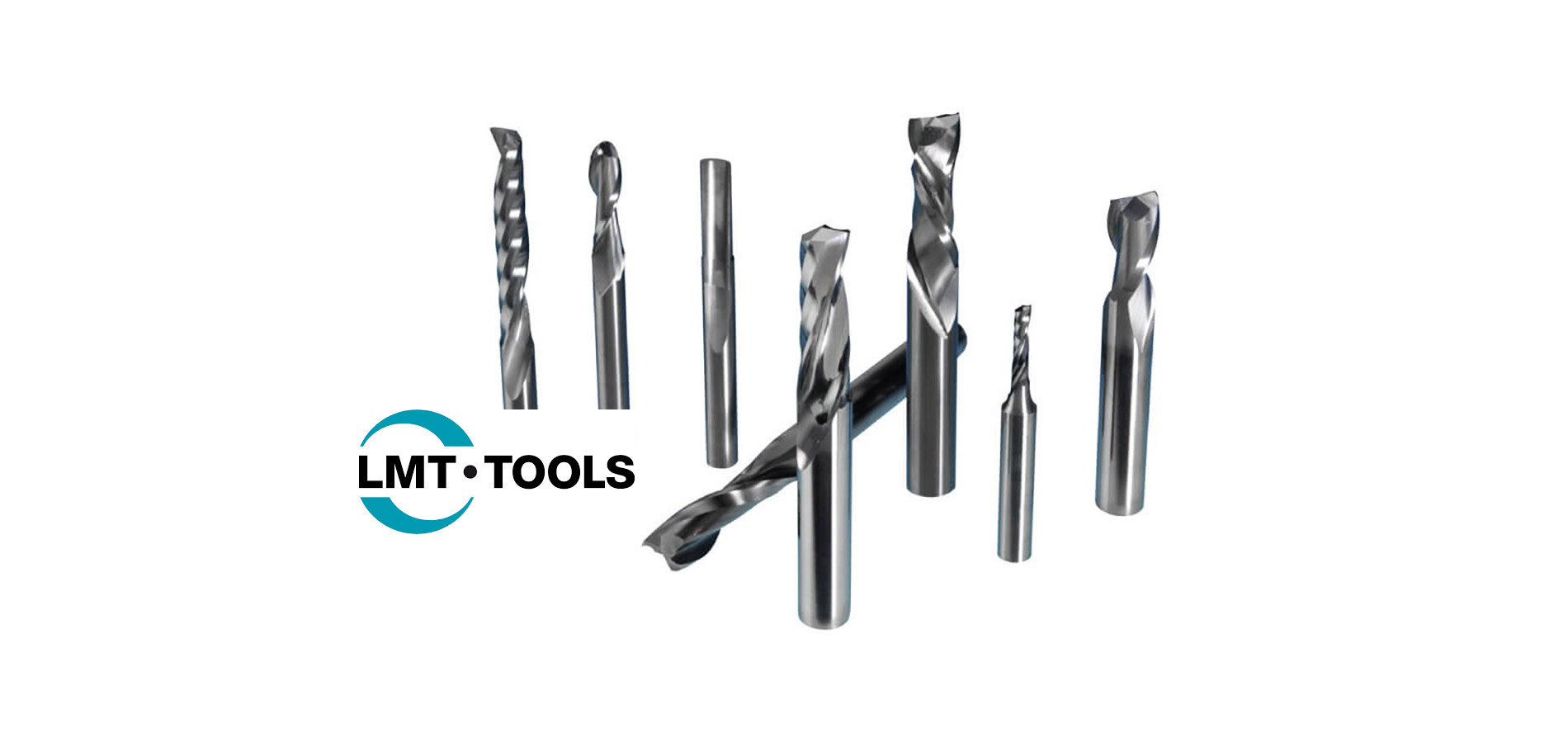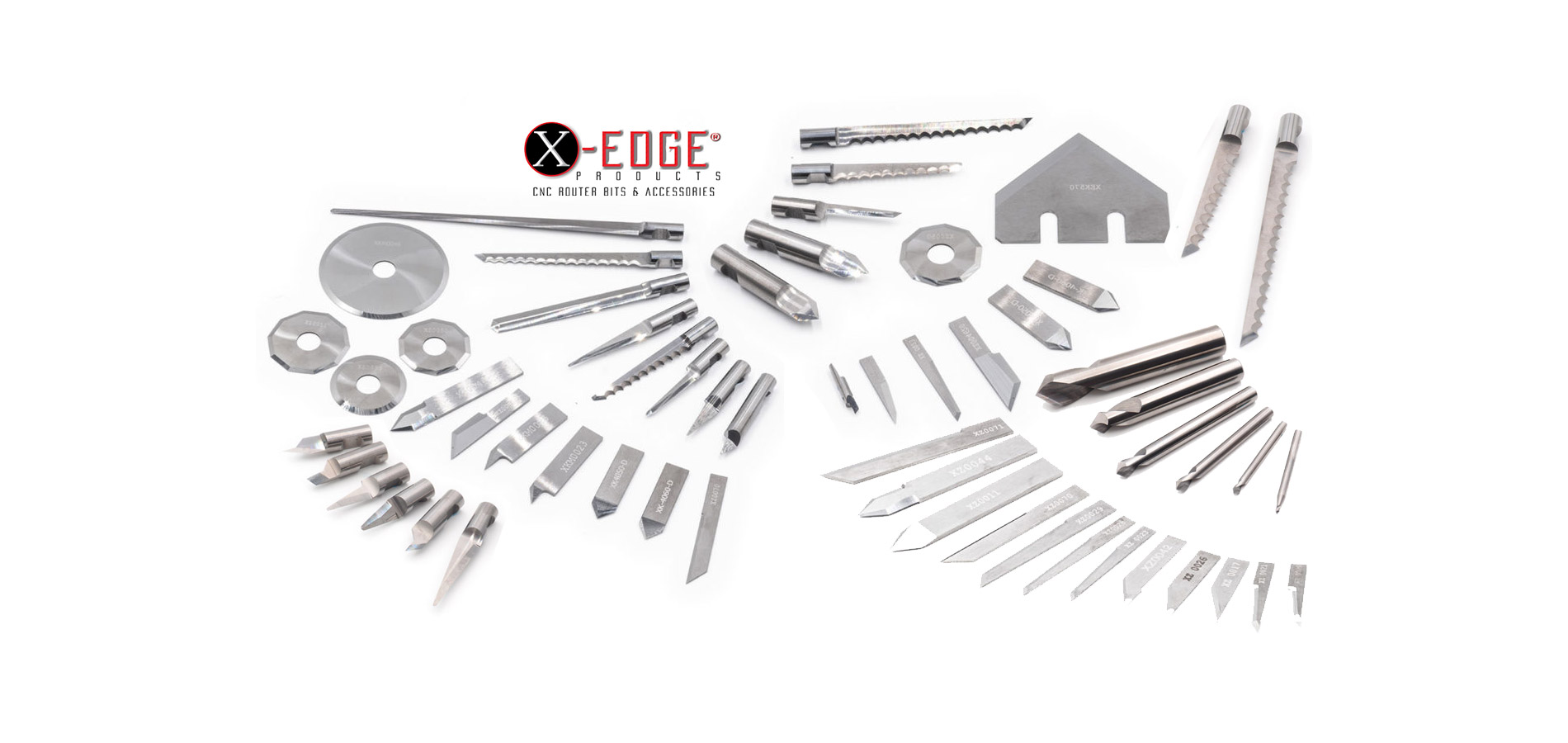ORDER BY 3PM FOR FREE* NEXT WORKING DAY DELIVERY
*FREE DELIVERY ON ALL ORDERS OVER £100
DELIVERY INCREASE: As from 1st March standard delivery will be £7 for all orders under £100.
Chip Load Chart
Find the optimal feed rate for your combination of target material and CNC cutting tool that you are using.
How to use a Chip Load Chart
There are certain parameters to consider before setting any cutting file if you want to achieve the required finish and accuracy. Chip load can be defined as the size or thickness of the chip that is removed with each flute per revolution. When material is machined the cutter must revolve at a specific RPM and feed at a specific feedrate to achieve the proper Chipload. There are also several factors to be considered when choosing the proper RPM and feed rate.
The chip load is a measurement of the thickness of material removed by each cutting edge during a cut. This is a valuable piece of information that can then be used to calculate new set ups. Calculation are as follows: Chip Load = Feed Rate (inches per minute) / (RPM x number of flutes). Example: Chip Load = 500 inches per minutes / (15,000 RPM x 2 flutes) Chip Load = .017″.
Chip loads are based on material thickness of average size for cutting edge length of tool. These recommendations do not apply to thicker material or CNC cutting tools with long cutting edge lengths. These chiploads are only a recommended starting point and may not accommodate all circumstances. Therefore, tooling damage may still occur and use of this chart does not warranty against tool breakage.
We would strongly encourage you to consult us directly on new tool applications. Our staff will be happy to answer any technical questions regarding cnc router bits or cutters by phone or email.
| Tool Diameter | Hard Wood | Softwood And Plywood | MDF/ Particle Board | High Pressure Laminate | Phenolic |
|---|---|---|---|---|---|
| 1/8” | .003” – .005” | .004” – .006” | .004” – .007” | .003” – .005” | n/a |
| 1/4” | .009” – .011” | .011” – .013” | .013” – .016” | .009” – .012” | .004” – .006” |
| 3/8” | .015” – .018” | .017” – .020” | .020” – .023” | .015” – .018” | .006” – .008” |
| 1/2” & up | .019” – .021” | .021” – .023” | .025” – .027” | .023” – .025” | .010” – .012” |
| Tool Diameter | Hard Plastic | Soft Plastic | Solid Surface | Acrylic | Aluminium |
|---|---|---|---|---|---|
| 1/8” | .002” – .004” | .003” – .006” | .002” – .004” | .003” – .005” | .003” – .004” |
| 1/4” | .006” – .009” | .007” – .010” | .006” – .009” | .008” – .010” | .005” – .007” |
| 3/8” | .008” – .010” | .010” – .012” | .008” – .010” | .010” – .012” | .006” – .008” |
| 1/2” & up | .010” – .012” | .012” – .016” | .010” – .012” | .012” – .015” | .008” – .010” |
Other valuable formulas:
- Feed Rate = RPM x number of flutes x chip load
- RPM = feed rate / (number of flutes x chipload)
- Metric conversion: Divide inches per minute by 39.374 (example: 300 inches per minutes divided by 39.374 = 7.62 metres per minute)
RPM Selection
The general operating RPM for tooling contained on this site is between 10,000 and 20,000 revolutions per minute. Usually, the higher the RPM, the better the surface finish becomes. However, the higher the RPM, the higher the friction generated between the tool and the workpiece. This friction is what creates the mechanical wear on the cutting edge. Your goal is to select the lowest RPM possible for each application.

